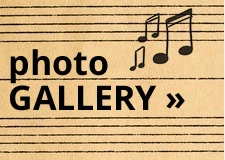First, let’s get prepared (ex. guitar)..

Tip: The standard or ‘open’ (no strings are held down) tuning of the guitar from low to high is E-A-D-G-B-E.
Notice the colored borders on your KYND set. To apply, follow the Color Code:
Red Border = Frets 1-4
Green Border = Frets 5-8
Blue Border = Frets 9-11
Gold Border = Fret 12, or the open strings
INSTRUCTIONS:
1. Match up decals to their correct frets using the color code.
2. Peel and apply decals at the top edge of the neck for best visibility.
3. Fret any note and look to the matching note column on the decals to find the name of that note.
Ex. What is the 6th fret note of the G string? The ‘open’ G string is the 4th string down from the top. Count (L to R) note columns over to the 6th fret and count down to the 4th note. The note is an enharmonic note (meaning it shares two names). Notice its #/b symbol. This note can be called a C# or a Db. Why? Because on the G string of the guitar this note is located in between a C and a D note.
FOR BEST RESULTS:
*Clean the instrument neck before applying (use a lint free polishing cloth with some guitar polish).
LT Decals [low tack]: are intended for instruments with wipe-on oil finish necks. LT decals are not intended for gloss finished necks and if applied on nitrocellulose lacquer, urethane, or shellac there is a possibility that some residue may be left when they are peeled. This is a minor inconvenience and can be easily cleaned*
SC Decals [static cling]: are intended for instruments with gloss finish necks. Made with finishes such as nitrocellulose lacquer, shellac, and urethane. Static cling will not adhere to any oil finish surfaces. Should the static charge ever diminish it can easily be restored by cleaning the neck and by rinsing the decal under cold running water and wiping dry–the static charge will be restored and ready to reapply.
——————————–
*To clean off any residue we recommend a cleaner called Naptha–-it is found on every guitar repair person’s workbench and is a common item at any hardware store. It is safe on the finish and wood of your instrument. Dab a small amount on a cloth or cotton ball. Wipe off the neck and it will be good as new.
Any way we can help? Please ask.



